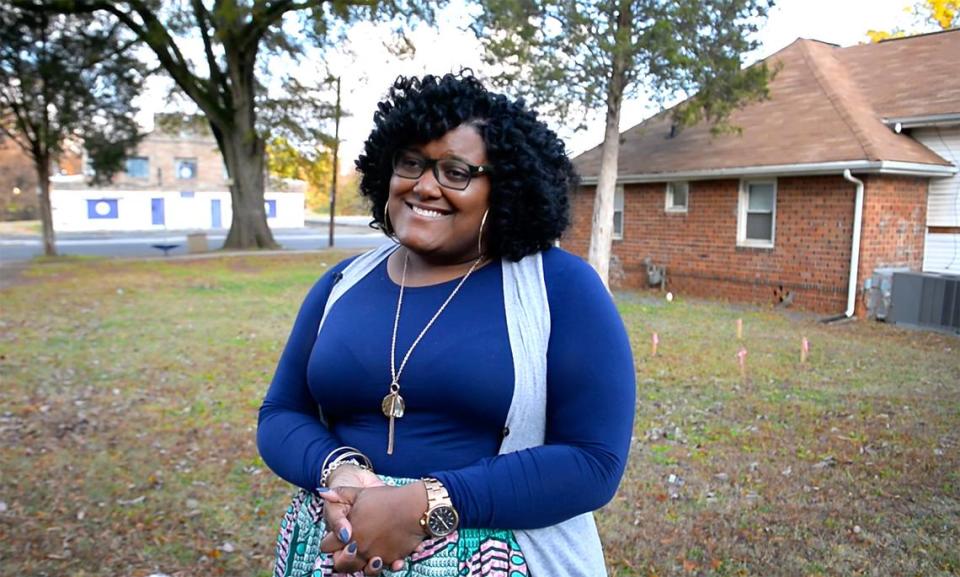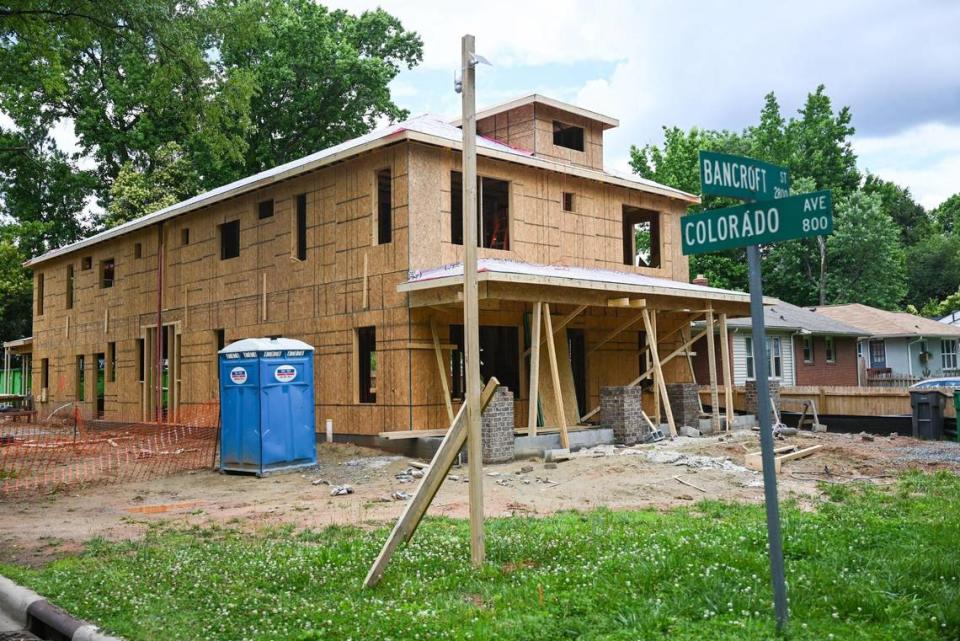Home demolitions in these fast-changing Charlotte neighborhoods impact how growth evolves
For newcomers to Charlotte, the city’s growth can feel exciting, from shiny new buildings rising out of the ground to new coffee shops popping up all over the place.
But growth can prompt a different reaction for someone who’s from Charlotte, said Kendra Jason, an associate professor of sociology at UNC Charlotte. “What they experience is loss of identity and loss of connection and sense of self,” Jason said.
One way that loss happens is through demolition of older homes that are often replaced with much larger, more modern ones.
The volume of demolition permits grows the closer you get to uptown, an Observer analysis of Mecklenburg County data found. Some of the highest concentrations of demolition permits were in neighborhoods like Myers Park and Sedgefield, in a “wedge” in the south of Charlotte that’s wealthier and often more white demographically than the city as a whole.
Big changes in Charlotte’s Black neighborhoods begs question: Who’s it for?
But there also are high rates of home tear downs in rapidly-changing neighborhoods in west Charlotte like Biddleville and Wesley Heights, data show.
These neighborhoods fall in Charlotte’s so-called “crescent” of lower-income communities in the north, east and west. Some of these areas are considered by housing experts to be rapidly gentrifying, where land values are rising and there’s a demand for high-density projects.

Demolition of older homes can reshape neighborhoods, removing physical connections to the past, housing experts told The Charlotte Observer. It also could impact housing affordability depending on what’s built in the older home’s place, raising concerns about gentrification in what are Charlotte’s historically Black neighborhoods.
City policies that call for development of denser housing units — duplexes and triplexes — could trigger new construction in neighborhoods at risk of displacement, according to a draft of an anti-displacement strategy document by Charlotte’s Neighborhood Equity and Stabilization Commission. This could lead to demolition of older and more affordable housing units, the draft states.
Demolition of those older homes could reinforce income inequalities, the document stated.
A high concentration of residential tear downs comes as the average house size in Mecklenburg County has grown by almost 9% in the past decade — from 2,071 square feet in 2011 to 2,256 last year, according to the Charlotte/Mecklenburg Quality of Life Explorer.
From 2015 through early this year, Enderly Park and Wesley Heights — quickly-changing neighborhoods west of uptown along Tuckaseegee Road — registered more than 35 demolition permits per square mile, according to an Observer analysis of county data. Compare that to large swaths of the county, where most neighborhoods registered fewer than five permits per square mile.
Meanwhile, housing sizes in both Enderly Park and Wesley Heights, have increased similar to the county average over the past decade.
What’s driving the demolitions in Charlotte
High land values and demand for high-density projects drive much of this redevelopment, a 2020 report from the UNC Charlotte Urban Institute found.
Housing costs are rising faster than wages in many of Charlotte’s close-in neighborhoods, the report stated. It noted that older homes are replaced with higher-end units that can be out of reach financially for existing residents.
Gentrification vs. growth in Charlotte Black neighborhoods: Do we stop or embrace it?
Most neighborhoods where gentrification and displacement occur are historically Black communities, said Charis Blackmon, executive director of the West Side Community Land Trust. The nonprofit works to address rapid gentrification and displacement in historically Black west Charlotte neighborhoods by building and preserving homes to keep them permanently affordable.

These neighborhoods historically have experienced a lack of investment, Blackmon said.
That drove what some in the development community see as an opportunity to buy older, lower-valued properties close to the center city and redevelop them, she said. These neighborhood don’t tend to see more resources poured in until new groups of people start to move in, she said.
It comes down to not honoring the history in neighborhoods like Grier Heights, Brooklyn or Cherry.
“It’s hard to see where we come from,” Blackmon said, “because a lot of our history is not preserved.”
Charlotte’s growth by the numbers
The county issues hundreds of demolition permits each year.
From 2015 through early this year, more than 3,500 residential demolition permits were issued in the county, or about 400 per year, data show.
Charlotte’s population has been increasing over this time as well. Over the past decade, Mecklenburg County experienced some of the fastest growth in the state, according to Carolina Demography.
The highest concentration of demolition permits fell in areas just south and east of uptown.
Portions around South End and Myers Park saw more than 100 permits per square mile during that time. Sedgefield saw the densest concentration of any neighborhood in the county at more than 200 per square mile.
Just east of uptown recorded similar numbers.

The neighborhoods around North Tryon Street — Optimist Park, Villa Heights, Belmont and Plaza Shamrock — had between 70 and 147 demolition permits per square mile.
To UNC Charlotte’s Jason, the city’s growth can be experienced differently depending on who’s watching. Jason is a Gambrell faculty fellow researching the pandemic’s impact on Black mothers’ housing and economic stability.
Lower-income families who live in close proximity to one another tend to depend on each other for day-to-day help like watching children or getting a job connection. Once those networks are broken up, it’s harder to maintain those connections, Jason said.
These residents haven’t lost sight of the fact that economic growth can be good for Charlotte, Jason said. It’s just when the development is not appreciative of the existing culture.
“They understand it’s a great loss to them personally,” Jason said.

How we got the numbers
The Observer reviewed county demolition permit data from 2015 to June 2023. Reporters eliminated duplicate permits on the same project, permits for structures of less than 800 square feet and permits where the construction cost was less than $5,000.
Then, reporters plotted demolition permits on a map of census tracts, which are neighborhood-size boundaries. Because census tract sizes vary, reporters calculated the number of permits per square mile for each tract.

